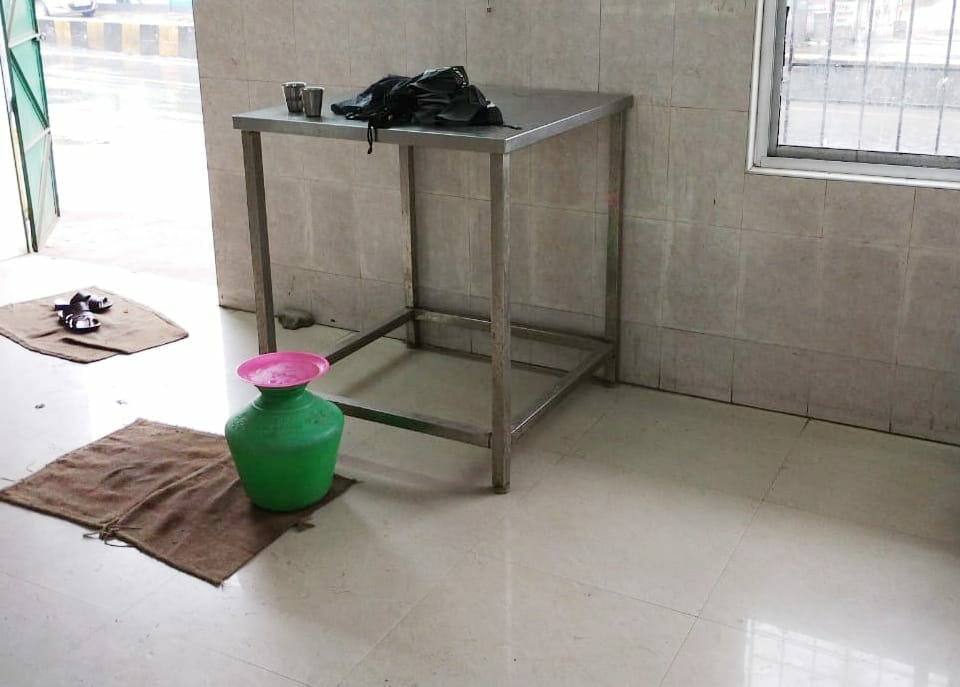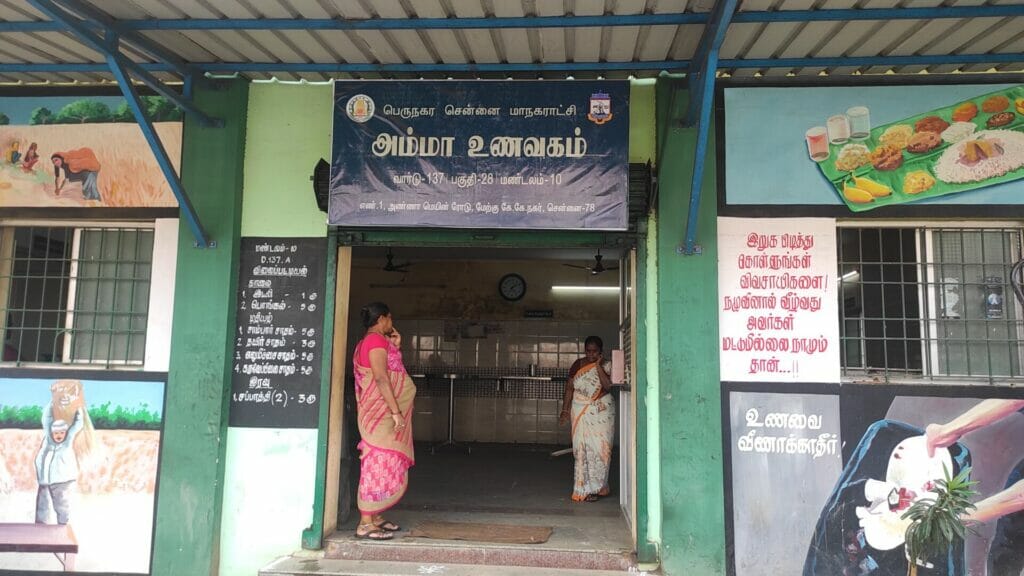Visit any of the Amma Canteens in Chennai, and you are very likely to run into a food delivery worker, satiating his hunger with sambar rice or idlies at a maximum of Rs 5, after delivering orders costing hundreds and thousands to patrons of other restaurants across the city. It’s not only gig workers, of course. Amma canteens are the go-to place for many other working class people in Chennai for their daily meals.
Food subsidy schemes dispensed through low cost canteens aim to tackle hunger and poverty. Tamil Nadu was a pioneer among all states in implementing such a programme in 2013 in India, only to have other states follow suit. Thus, we subsequently saw the establishment of Indira Canteens in Karnataka and Annapurna Rasoi in Rajasthan.
Coming back to the Amma canteens, while they have undoubtedly served many by providing subsidised food for citizens who are unable to afford costlier food available in eateries, there are glaring gaps that need to be addressed for these joints to reach their potential in Chennai.
Read more: Will the Urban Employment Scheme in Chennai end the woes of urban poor?
Operation of Amma Canteens in Chennai
The Health Department of Chennai Corporation manages the canteens across the 15 zones in the city. Out of the initial 407 canteens, 400 Amma Canteens are currently running in Chennai, confirms a GCC official. With 4355 workers on the payroll of the canteens, it serves breakfast, lunch and dinner at affordable rates. The menu of the canteen includes:
| Meal | Timing | Meal | Price |
| Breakfast | 7 am to 10 am | Idly Pongal | Re.1/piece Rs. 5/plate |
| Lunch | 12 pm to 3 pm | Curd rice Sambar rice Lemon rice Curry leaves rice | Rs. 3/plate Rs. 5/plate Rs. 5/plate Rs. 5/plate |
| Dinner | 6 pm to 9 pm | Chapati | Rs. 3/plate |
“We get vegetables every day and bags of dry rations in bulk every month from the Chennai Corporation,” says Jaya, an Amma Canteen worker from KK Nagar. “We don’t always get the same vegetables every day. For instance, we may not get pumpkins on a daily basis.”
“For every meal, we see approximately 70 people eating in our canteen- including daily wage workers, auto drivers and watchmen of buildings,” says Bakkiyam, another worker in an Amma Canteen in Chennai, who has been working in the canteens since its inception. “There are around 10-12 women workers in every canteen. We work in two shifts: from 5.30 am to 1.30 pm and from 1.30 pm to 9.30 pm. Half of them are in the morning, while the other half work in the evening shift.”
Each Amma Canteen worker earns Rs 300/day in Chennai. “After the 10th or the 15th of every month, the salary is credited to our bank accounts after the zonal offices process our attendance,” says Bakkiyam.
“Zonal officials come for inspection at times,” says Jaya.
What plagues the Amma Canteens in Chennai?
Quality and taste of food: “When the quality and taste of the food is not up to the mark, it feels like this is what I deserve because I am able to pay only a meagre sum for my meals. People like me are robbed of our dignity then,” says Narayanan, a daily wage worker, who has his breakfast every day at Amma Canteens in Chennai wherever his work takes him. “The idlies taste sour and the sambar is dilute with water in most of the canteens I have tasted. The vegetables are also absent in the sambar sometimes.”
“The quality and taste vary from outlet to outlet in Chennai. According to me, the best quality and taste is the Amma Canteen in Kotturpuram,” says Manikandan, an auto driver.
“When Amma Canteens began in Chennai, the quality and taste were good. I used to eat there with my friends during my school days. But today the quality seems to be deteriorating,” says P Sarath, a public health consultant with the National Health Mission, who used to eat in the canteens in Zone 2 of GCC.
Infrastructure of canteens: “There are no chairs in all Amma Canteens. Only tables. After a day of hard work in the sun, I would ideally want to sit and have my meals. Moreover, in some canteens, the tables also wobble. I have seen many people sit on the floor and eat,” says Narayanan.
When Raghukumar Choodamani, a resident of Perambur, visited a canteen in the locality, he found that the wash basin was not working. “We saw that a tanker supplies water which is pumped to the overhead tank. Also, the same water is used for drinking and washing hands.”

Working conditions of the women employed: Workers do not get any offs to spend with their families on festival days like Deepavali or Pongal. “If we were to take off during illness, or even due to periods, we are going to miss our daily wage of Rs. 300. Why cannot they let the women workers take leave on a rotational basis, at least?” Bakkiyam requests the government to take a call on this.
Amma Canteens intended to solve two major urban problems when it was introduced: hunger and women’s employment through women’s self-help groups. The civic body has employed women to run the canteens.
Allegations against some workers: R Kannan, councillor of Ward 138, had visited an Amma Canteen. “I found workers forging attendance and taking a portion of rations for themselves,” he alleges.
Read more: Are Amma canteens all set to be the go-to cafes of the city?
Is money a problem?
Amma Canteens in Chennai have suffered a loss of more than Rs. 700 crores since it began. For 2022-23, Rs. 78.1 crores have been earmarked as the budget estimate to run the canteens in the city, as per the recent GCC budget.
Officials state that huge losses are due to a decrease in customers. In 2014, around 3.5 lakhs of people ate at the Amma Canteens in Chennai, while in 2022, there were 1.5 lakh customers only.
The Corporation has asked for Rs. 100 crores from the Tamil Nadu government to operate the canteens. The civic body has explored other options for funding the canteens too. A couple of years ago, a plan was mooted for the setting up of a trust to administer the canteens and raise CSR funding. However, no money has been collected via CSR mode, confirms an official.
“If there is a money crunch, one way is to increase the price of the meals to recover from losses. Instead of a meal priced at Rs. 5, it can be sold at Rs. 10,” says KR Shanmugam, Director of Madras School of Economics. This can flow back in to running the canteens and reducing the losses.
“Even if the price is a bit higher, but they can provide good quality food, I am ready to pay,” says Narayanan.
“Under National Urban Health Mission (NUHM), a lot of funds are pumped into the scheme to districts. Beyond CSR, the Union Government allocates amounts for urban health. The district can try getting those funds since Amma Canteens help strengthen food security,” says Sarath. “Every year-end, there is a Planning Implementation Commission. The civic body can propose urban food security schemes in that commission for budget allocation. Sometimes NUHM funds go unused.”
How can the canteens reach their potential?
“Along with serving meals, the canteens could start selling tea and coffee for people. This will increase footfall and help generate revenue,” says Sarath.
“The quality and taste of the food, along with the running of the canteens can be improved to a certain extent by motivating the workers,” says Sarath. “For instance, the women workers under Makkalai Thedi Maruthuvam have attained a sense of ownership, because they are given certain responsibilities and the residents are asked to reach out to these women first before going up the hierarchy. Similarly, we should also provide the women employed at Amma Canteens with a sense of pride and ownership. This will translate into better service.”
“The civic body can provide incentives for better performance of the canteens. This will create a competitive spirit, which can also improve the operations of the canteens. GCC can also promote better-performing workers or even keep a function to celebrate their service to the community,” adds Sarath.
Out of 121 countries, India has a rank of 107 in the 2022 Global Hunger Index. According to the 2022 India State Hunger Index, Tamil Nadu is in the sixth position, out of 17 states, with an “alarming” score. Reviving Amma Canteens in Chennai can increase the state’s rank and can help Tamil Nadu become hunger-free by 2030, one of its Sustainable Development Goals.
